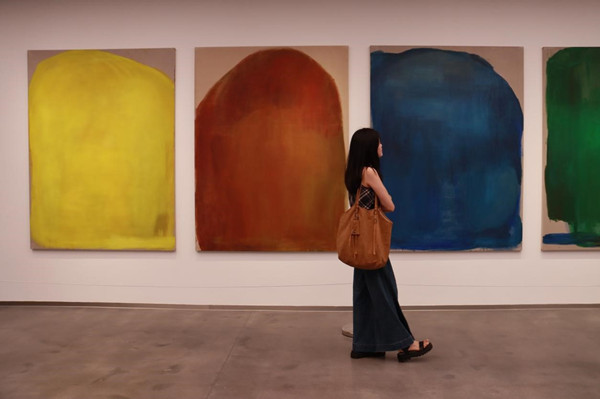Art exhibition in Liangjiang bridges cross-cultural dialogue
Residency works by 20 global artists have debuted at the 2025 RICHAUS International Artist Workshop (RIAW) Exhibition, revealing the intersections of local roots in Chongqing and global perspectives. The exhibition runs until Aug 22 at RICHAUS, a new art space in Liangjiang New Area's Sino-Swiss Techno Park.

The 2025 RICHAUS International Artist Workshop (RIAW) Exhibition is held at RICHAUS. [Photo by Feng Lian]
The 2025 RIAW stems from a Chongqing-based residency program founded in 2008. The program, bringing together creators from diverse cultural backgrounds, fosters cross-cultural collaboration through field research and community engagement. This year's two-week residency culminated in experimental installations, video works, paintings, and collages exploring urban life and collective existence.
Chongqing's industrial legacy leaves distinct traces for artistic exploration, and its raw, rugged energy makes it an ideal city for creative production, noted Zhang Yuhan, art director of RICHAUS, who came to Chongqing a year ago.
The exhibition starts with an installation by Wu Jianping, a local artist in Chongqing. Wu repurposed discarded liquor bottles and elephant sculptures salvaged from the Beiyuan Glass Factory, a former industrial site that houses the residency project. Titled Where Dreams Begin, the work symbolizes material rebirth and the inception of a sustained, long-term transformative process.

The exhibition starts with Wu Jianping's installation Where Dreams Begin. [Photo by Feng Lian]
Japanese artist Endo Rika's video Flip Over captures elderly residents playing cards in public spaces, an everyday sight in Chongqing. "Life in Chongqing, the land of my first arrival, was something I could only really understand if I saw and experienced it with my own eyes. Those days were like flipping a card that had been turned inside out," said the artist.
Amid escalating turbulence and conservatism roiled by intertwined crises, cross-cultural dialogue is urgently needed. The 2025 RlAW aims to foster greater understanding and re-establish art as a universal language through cross-cultural dialogue, noted Ni Kun, curator of the exhibition.



